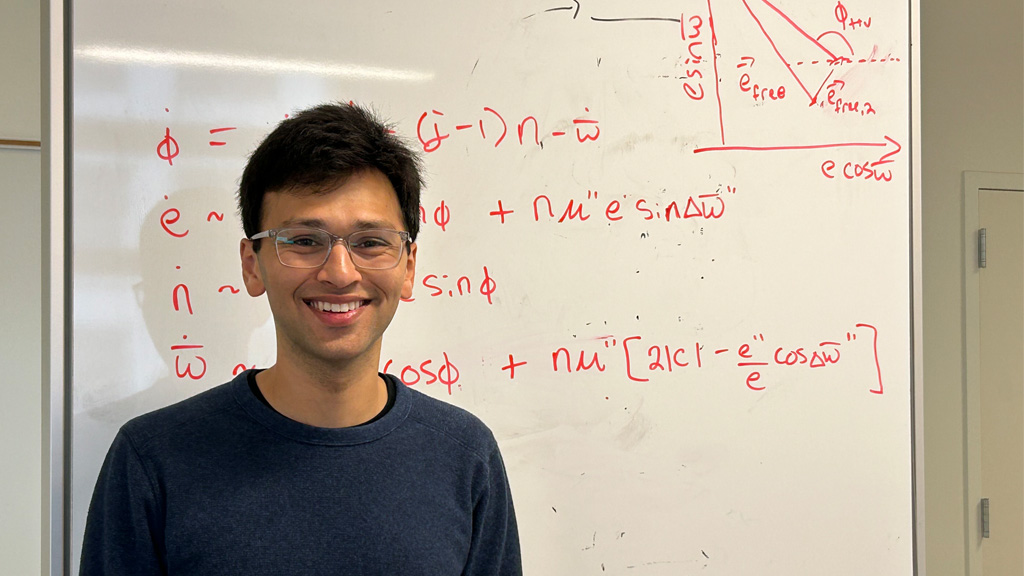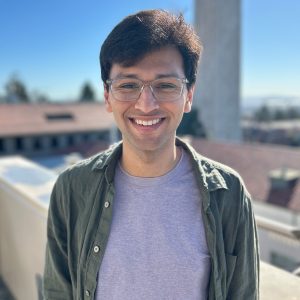“For the first time, we’re putting planet formation on an empirical footing. We’re going to put theory to the test.”
Nick Choksi
Picture a young but giant planet wrapped in swirling layers of dust and gas. Or a pair of smaller rocky planets, locked in a delicate cosmic dance. These phenomena are pieces of a larger puzzle—one that Nick Choksi is working to solve.
As a theorist, Mr. Choksi blends pen-and-paper calculation with computer simulations to illuminate the physics shaping planetary systems. His research tackles fundamental questions, such as how rocky planets like Earth build their solid cores and how gas giants like Jupiter accumulate their thick atmospheres.
Next-generation telescopes will soon capture direct images of infant gas giants. However, these glimpses alone aren’t enough to tell the full story. Mr. Choksi builds models to decode the images and study how planets gather their gas, laying the theoretical foundation to interpret new observations. With JWST poised to reveal forming gas giants in the years ahead, his work will help translate fresh discoveries into a deeper understanding of planetary birth.
Smaller worlds like Earth are too faint to observe as they assemble, so Mr. Choksi discerns their pasts by observing the scars of older planetary systems. He focuses on resonances—synchronized orbits among families of planets. His research demonstrates how resonances encode the birth environments and evolutionary history of planetary systems, arguing that resonances point to a “giant impacts” era of collisions among exoplanets, similar to a process scientists think sculpted our own solar system.
As a 51 Pegasi b Fellow, Mr. Choksi will continue developing the story of how rocky planets and gas giants form. He’ll apply his models to the first planetary embryos detected by JWST to clarify how giant planets acquire their gas. At the same time, he will use new data from the Transiting Exoplanet Survey Satellite (TESS) that shows how resonances unravel over time to reconstruct the violent histories of rocky planets.
Mr. Choksi will receive his Ph.D. in astrophysics from the University of California, Berkeley, in Spring 2025.


